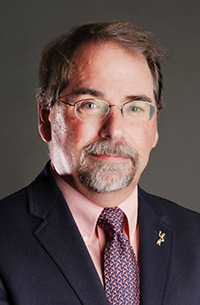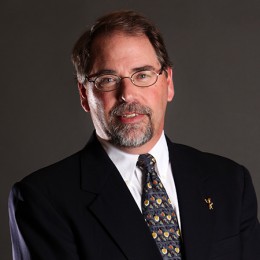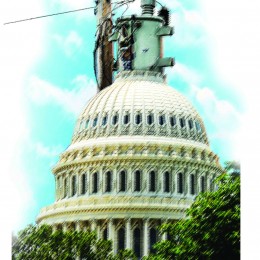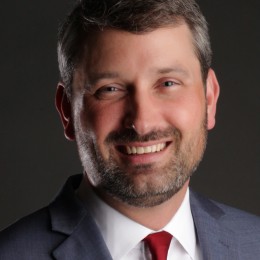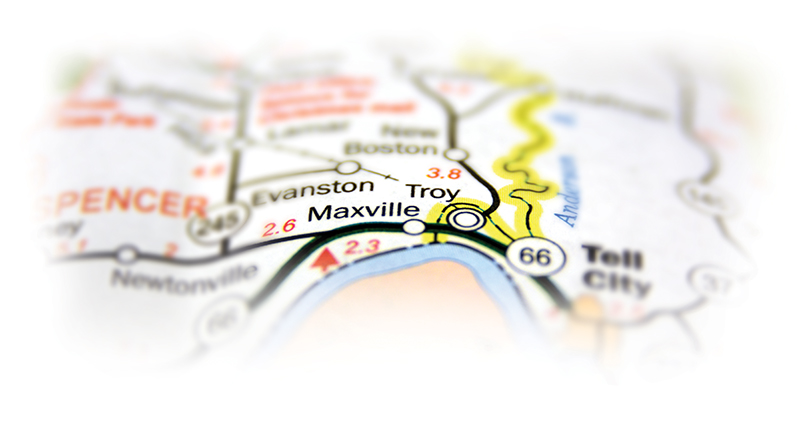 When I was in grade school in the early 1970s, our neighbors across the alley had a concrete basketball court in their back-yard. That square slab was a magnet for guys of every size — from high school to grade school — in each of their three sons’ sphere of friends. Between pickup games, a lot of talking and growing up was done there.
When I was in grade school in the early 1970s, our neighbors across the alley had a concrete basketball court in their back-yard. That square slab was a magnet for guys of every size — from high school to grade school — in each of their three sons’ sphere of friends. Between pickup games, a lot of talking and growing up was done there.
One afternoon, when I must’ve been in junior high, the topic turned to dreams beyond high school. Out of curiosity, one of the old-timers, probably close to graduation, asked us all what we wanted to be. When it came around to me, I announced I was going to be a reporter.
“A reporter?” he scoffed. “For who … the Maxville Monthly?”
Everyone laughed — though “Maxville” was unfamiliar to most of us. We figured it had to be a clever putdown. Then someone asked, “Where and what is Maxville?”
Mr. Wiseguy and a couple of others had a hard time describing it or its exact location, but we all got the gist. For, though it still shows up on the Indiana road map, Maxville — even then — was maybe a couple of homes and an abandoned gas station along the Ohio River near our hometown.
With the context of the zinger fully revealed, I tried to rebound with something like, “No, … The New York Times!” That air ball brought a bigger guffaw.
Ah, the dreams of a small-town boy out to make the “big time.”
Now, some 43 years later, I work for this monthly publication.
It’s a little funny how it worked out, but I guess I do indeed write for the “Maxville Monthly.” I work for those few folks still living there … and those living in the hundreds of other unincorporated Maxvilles, suburban neighborhoods and edges of towns all around Indiana. From Aberdeen to Zulu and Angola to Zenas, all those homes, farms and businesses start adding up (to nearly 250,000 all told). And I couldn’t be more pleased with where my career has taken me.
Long after those backyard basketball days, I came to realize big time for me was never going to be at The New York Times or living in a far away metropolis. More important to me was living in visiting distance to family.
Summer jobs at small-town newspapers during college, where I worked and studied to be that journalist, made me realize I wanted to live in a mid-sized city, but I liked even more the idea of creating every aspect of the stories I initiated — akin to working for a small-town paper. I liked writing about local folks, shooting the photos and designing the pages. I could never do all those things at a large paper or even regularly at the suburban-Indianapolis newspaper I settled for out of college.
Before long, I realized — most of all — I didn’t want to report on or photograph an endless parade of miscreants, molesters and murderers. That’s when I answered an ad for an “Associate Editor” who could write, shoot photos and design pages for a “westside Indianapolis association.”
When offered, I accepted the position without reservation — even though I didn’t know for sure what electric co-ops were and why they had such a publication. But, as poet Robert Frost suggested, I took the road less traveled, and it made all the difference.
An electric co-op career was never on my radar screen, but I’ve been fortunate the past 28 years to be able to write and photograph stories close to the heart of rural and suburban Hoosiers, to discuss energy issues, to share electrical safety and efficiency tips, to celebrate and build a sense of community through the shared bond of cooperative ownership.
So now, I hope students pondering their futures will check out the possibilities offered by their local electric co-ops. Even after all these years, I’m continually amazed by the broad scope of careers and interests employed within the family of electric co-ops, their power suppliers, the statewide association where I work, and our allied partners around the country.
This month’s cover story highlights three of these careers (and provides a long list of job titles and duties that keep co-op power flowing smoothly).
The electric co-op community — from tiny burgs like Maxville to the fast-growing burbs all around the state — offers so much for those seeking fulfilling careers while wanting to keep their home lights burning.
Richard G. Biever is senior editor of Electric Consumer. This commentary was revised from one which appeared 16 years ago.

